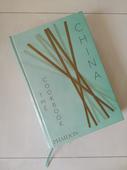The growth of home delivery during the pandemic poses yet another challenge to restaurants trying to serve authentic Chinese cuisine to a present-day audience. Joyce Yip reports.
 George Ip, founder of George Private Kitchen, is known for his arduous reconstruction of traditional Chinese dishes. (PHOTO PROVIDED TO CHINA DAILY)
George Ip, founder of George Private Kitchen, is known for his arduous reconstruction of traditional Chinese dishes. (PHOTO PROVIDED TO CHINA DAILY)
When third-generation owner of Yung Kee, Yvonne Kam, launched Yung Bistro — the chic offshoot of her grandfather’s 79-year-old Hong Kong restaurant — in K11 Musea last year, she expected her chefs to add a “modern creative twist to her family’s authentic Cantonese food”. What she got instead were dishes with black truffle and Wagyu beef.
“Change for these chefs is really hard because adding Western ingredients helps make money,” says Kam. “For me, a modern twist is about presentation; it’s in the clever use of traditional ingredients and culinary methods in combinations we’ve never seen before, not just adding Western elements to Chinese dishes.”
It took the concerned chef nearly a year to start appreciating Kam’s idea.
The restaurant has since come up with several dishes that Kam is proud of. Among them fermented tofu stuffed in shrimp paste, steamed egg white with mini crab roe and deep fried prawn with mini crab roe have proved to be highly popular.
 Kei Lum Chan, co-author of China: The Cookbook, says creative interpretations of traditional Chinese dishes are fine if they improve the food, which, he feels, is rarely the case. (PHOTO PROVIDED TO CHINA DAILY)
Kei Lum Chan, co-author of China: The Cookbook, says creative interpretations of traditional Chinese dishes are fine if they improve the food, which, he feels, is rarely the case. (PHOTO PROVIDED TO CHINA DAILY)
Tweaking tradition
Throughout the last decade, there have been efforts at variations on Chinese cuisine to enhance its appeal and widen the customer base. Attempts at fusion, dim sum with Russian caviar and gold flakes, for example, have garnered Instagram likes but the taste fell short of universal approval. Since last year, the pandemic-triggered growth of home-delivery culture has stripped this centuries-old cuisine of its former glory as stuffing traditional food inside plastic boxes ruins its distinctive features. Chinese restaurants which swear by authenticity have been battling the odds while they try to preserve their roots.
In China: The Cookbook, co-authors Kei Lum Chan and Diora Fong Chan call Chinese food “the fabric of culture and daily life for the country’s 1.4 billion denizens”.
It is a vehicle of governance, an engine for health, as well as symbols of fortune and prosperity that, owing to trade on the Silk Road and globalization, have long since welcomed foreign ingredients and culinary practices.
Kei Lum Chan, therefore, does not have a problem with caviar on Chinese dishes if “it improves the food”, although he is yet to see that happen at a so-called contemporary Chinese cuisine restaurant in Hong Kong.
“China has long been a country that assimilates things from outside. For example, tomato is imported but you see it in a lot of our dishes now,” says Chan. “Personally, I wouldn’t even define what we see in Hong Kong as fusion-Chinese cuisine. They are just marketing gimmicks to justify a higher price tag.”
“The problem,” adds Chan, “is that many Chinese restaurant chefs do not have time to do research (in order) to establish integration between all the ingredients on the dish. Chinese cooking is harmony and integration…whether in aesthetics or flavors.”
 Steamed egg white with mini crab roe, a traditional Chinese dish served at Yung Bistro, has caught the imagination of patrons across the board. (PHOTO PROVIDED TO CHINA DAILY)
Steamed egg white with mini crab roe, a traditional Chinese dish served at Yung Bistro, has caught the imagination of patrons across the board. (PHOTO PROVIDED TO CHINA DAILY)
Is Chinese food cheap?
The use of pricey, exotic ingredients appeals to non-Chinese and younger customers across Hong Kong. A section of restaurant-goers seems to subscribe to the outdated notion that Chinese food is cheap, prepared under unhygienic conditions and the eateries are run by laymen who use ingredients that are too bizarre for the Western palate. This stereotype was partially true when working-class Chinese immigrants opened low-budget restaurants in the early 1900s in droves in their adopted countries.
Kam says the downfall of Chinese cuisine began long before gold flakes and caviar. Over the past 20 years or so, chefs catering to wedding banquets have been ditching time-consuming techniques like braising (men), stewing (dun) and double-boiling (also dun) in favor of easy, quick-to-serve items.
“Wedding menus are usually limited to stir-fried or deep-fried food that’s straightforward for chefs to execute even for hundreds of guests. Plus, traditional cooking methods take time and usually involve expensive ingredients that go to waste if they don’t sell,” says Kam. As a result, “a generation of chefs has lost the old skills and we no longer see laboriously-executed dishes anymore.”
 Traditional Chinese delicacies like Hangzhou-style mitten crab roe and meat filled in orange, served at George Private Kitchen, often take hours to prepare. (PHOTO PROVIDED TO CHINA DAILY)
Traditional Chinese delicacies like Hangzhou-style mitten crab roe and meat filled in orange, served at George Private Kitchen, often take hours to prepare. (PHOTO PROVIDED TO CHINA DAILY)
Attention to detail
George Ip, the founder of George Private Kitchen in Hong Kong, says present-day eating habits are the biggest hurdle to preserving tradition.
“When customers only give you two hours of their time to cook, everything — even something as complicated as Chinese food — becomes fast food. He regrets that many people today seem to equate Chinese cuisine with fast food and might never get a taste of “what authenticity means”.
Ip is known for his arduous reconstruction of traditional Chinese dishes by following ancient recipes. These include Hangzhou-style mitten crab roe and meat filled in orange and Jiangnan-style steamed chicken with shrimp paste. When preparing his version of the latter, for instance, he painstakingly picks out all the tendons of a chicken and puts it in broth that’s been cooking for more than 10 hours to be able to serve chicken flavors without any visible chicken in the dish. Unsurprisingly, to eat at his private kitchen, customers must confirm the menu at least two days in advance.
“Our eating behaviors today and mixture of cultures have changed the way we appreciate food so, of course, tweaks must be made to tradition, even when I am re-creating old recipes,” says Ip. It makes sense to attempt creative interpretations of traditional cuisine only after a chef has mastered the art of the original version, he adds.
 Yvonne Kam, owner of the 79-year-old Yung Kee restaurant, says it makes sense to stick to the tried and tested rather than follow trends. (PHOTO PROVIDED TO CHINA DAILY)
Yvonne Kam, owner of the 79-year-old Yung Kee restaurant, says it makes sense to stick to the tried and tested rather than follow trends. (PHOTO PROVIDED TO CHINA DAILY)
Not meant for home delivery
Since the pandemic began and more people started opting for home delivery, both Ip and Kam dropped several signature dishes from the menu, as they felt packaging food in plastic boxes would alter the temperature, flavor and wok qi — the prized seared taste that comes from a fiery wok. Steamed dishes are a definite no, prawns become powdery, tofu loses some of its aromas… the list goes on.
Also, traditional Chinese food is often meant for a communal table, not the best dining option during a pandemic.
Chan feels by the time restaurants are ready to run at full capacity again, they will have to try harder to draw customers who have got used to the convenience of home delivery. However, restaurants that value tradition will not bend their principles to stay in business, he says.
Yung Kee, meanwhile, closed its doors during the pandemic to undergo a facelift. Red carpets and bulky chairs have made way for chic tiles, a bar seating area and minimalistic light fixtures. Wearing new uniforms, the staff share stories about the restaurant’s decor, history and food with patrons.
“The restaurant business is a lot like fashion. Back in the 70s, the first wave of ‘modern Chinese restaurants’ came with carpets and comfy sofas and our business slumped. So we rebranded in the 90s and launched dishes from our 30s-40s menu, like frog stomach. It was a hit because customers longed for classic foods from their childhood,” Kam says.
“If we just stay with old, classic dishes in a corny way, then of course it’s very hard to engage with the younger generation; but if we go beyond our principles, then we are just like any other so-called contemporary Chinese restaurant,” says Kam.
“It’s a fine line, but in order to be long-lasting, we must stick to what we’re good at rather than follow trends,” she adds.


